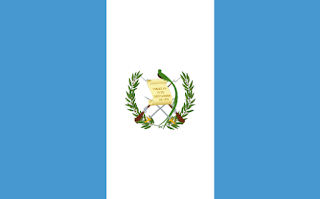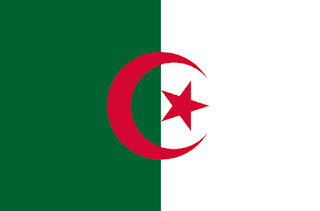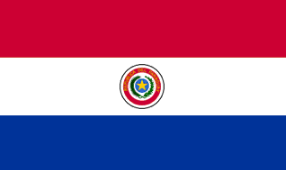FACTS ABOUT GUATEMALA
AMAZING
FACTS ABOUT GUATEMALA
1.
Guatemala City is the capital city of Guatemala.
2.
The total population of Guatemala is 15,189,958.
3.
The natives of Guatemala are called Guatemalans.
4.
The Quetzal (GTQ) is official currency
of Guatemala.
5.
Guatemala shares a border with Belize, El
Salvador, Honduras and Mexico.
6.
Guatemala became independent in 1821. Other
countries that became independent during the same year include El Salvador,
Honduras, Nicaragua, and Costa Rica. All these countries gained their
independence from Spain.
7.
The national anthem of Guatemala was not
written by a Guatemalan, but by a Cuban – José Joaquín Palma. However, it was
composed by Rafael Álvarez Ovalle.
8.
The Quetzal is the national bird, and
White Nun Orchid (Monja Blanca) is the national flower of Guatemala.
9.
There are 21 Mayan languages (a language
family spoken in Mesoamerica and northern Central America by at least 6 million
Maya peoples) spoken in Guatemala. However, Spanish is their official language.
10.
The currency of Guatemala—Guatemalan
Quetzal—is named after the beautiful Quetzal bird. In ancient Mayan times, the
feathers of this bird were used as currency.
11.
One interesting fact about Guatemala is
that Blue denim comes from the country!
12.
The instant coffee process was invented
in Guatemala by George Washington, an inventor, and businessman of
Anglo-Belgian origin.
13.
Do you like chocolate bars? The first
ever chocolate bar was also invented in Guatemala during the Mayan times.
14.
Chocolate residue dating back to 460-480
AD was found in a vessel in Guatemala.
15.
The country has the second-largest
concentration of Ozone. Ozone is a gas which is available both in the Earth’s
upper atmosphere (stratosphere) and at ground level (troposphere).
16.
Guatemala was conquered by Spanish
conquistador Pedro de Alvarado in 1524.
17.
The longest civil war in the history of
Latin America, which was fought between military governments, right-wing
vigilante groups and leftist rebels lasted a good 36 years.
18.
By the end of the civil war, 200,000
citizens were dead.
19.
Nueva Guatemala de la Asunción, which is
also the largest and capital city of Guatemala, is known as Guatemala City.
20.
Guatemala is known for its steep
volcanoes, vast rainforests, and ancient Mayan sites.
21.
Miguel Ángel Asturias Rosales (October
19, 1899 – June 9, 1974) was a Nobel Prize-winning Guatemalan poet-diplomat,
novelist, playwright and journalist.
22.
Guatemala has one of the highest violent
crime rates in Latin America. The country saw 6,000 violent deaths in 2014. And
an average of 101 murders per week were reported in 2016. For a detailed report
on crime in the country, as well as some safety tips, read this page.
23.
Motagua River is the longest river in
Guatemala. It measures approximately 250 miles. The river is a major
transportation artery for coffee, bananas and other fruits that are raised in
the valleys of the country’s eastern region.
24.
Guatemala’s Lake Atitlán is the deepest
lake in Central America, with a maximum depth of about 340 meters. It is also
regarded as the most beautiful lake in the world, serving as the country’s most
important national and international tourist attraction.
25.
Tajumulco Volcano, the highest point in
the country and Central America, is 4203 m above sea level.
26.
There are more than 30 volcanoes in
Guatemala, out of which three are active.
27.
Suchitan, Ixtepeque, Acatenango,
Atitlan, Moyuta, Agua, Cerro Santiago, Tajumulco, Chingo, Quezaltepeque,
Chiquimula, Cuilapa-Barbarena, Flores, Fuego, Ipala Volc Field, Santa Maria,
Almolonga, Santo Tomas, Tahual, Pacaya, Tecuamburro and Toliman are the names
of some of the volcanoes from the region.
28.
The active volcanoes in Guatemala
include – Fuego, Pacaya and Santiaguito.
29.
The export of coffee is the country’s
biggest business. Almost 50% of Guatemalans are employed in agricultural
activities.
30.
Tourism is the second-largest industry
in the country, employing approximately 35% of its population.
31.
Guatemala City is the industrial and
commercial center of the country, employing the remaining 15% of the
population.
32.
The unequal distribution of land and
wealth in the country is the biggest reason for uneven development in the
region.
33.
The country is also the world’s leading
producer of Jade.
34.
Fourteen percent (14%) of Guatemalans
live on less than $1.25 US a day.
35.
Guatemala is the top remittance
recipient in Central America as a result of Guatemala’s large expatriate
community in the US.
36.
There are three UNESCO World Heritage
Sites in Guatemala. These sites include Antigua Guatemala, Tikal national Park,
Archaeological Park and Ruins of Quirigua.
37.
Tikal National Park is the world’s first
mixed UNESCO World Heritage Site.
38.
More than 1.2 million people visit
Guatemala every year.
39.
If you are interested in seeing the lava
flow, you may want to visit the Pacaya volcano. Visitors flock to this site to
take glimpses of the red-hot lava.
40.
Language:
the official language of Guatemala is Spanish. Additionally, while twenty- one
Mayan languages are widely spoken throughout the highlands, Xinca, Arawakan and
two non-Mayan Amerindian languages are spoken on the Caribbean coast.
41.
Religion:
Roman Catholicism is the dominant religion in Guatemala followed by nearly 50%
of the country’s population. However, Evangelical Protestantism and later
Orthodoxy have become popular in the recent decade. The Oriental Orthodoxy and
the Eastern Orthodox Church claim rapid growth, especially in the native Maya
people.
42.
Cuisine:
Guatemala cuisine is primarily based on Mayan and Spanish cuisine and
prominently includes beans, corn, and chilies as key ingredients in their food
recipes. Pachas (a kind of tamale made from potatoes) is a common dish in
Guatemala eaten usually on Thursdays.
43.
Beverages:
locals in Guatemala prefer to drink coffee weak and sweet with little milk.
Apart from drinking fruit juices, Guatemalans also love drinking fruit shakes,
commonly referred as “licuados”. The national beer of Guatemala is Gallo.
44.
Clothes:
the Mayan people are known to wear bright colored shirts, blouses, dresses, and
capes. Each village has its own individualist pattern, making it easy to identify
the village of the person by the design of his or her clothes. While
traditional clothing is worn often by the poorer Guatemalans, Ladinos prefer
wearing western- style outfits.
45.
Family life:
families in Guatemala share a close bond with each other and remain that way
their entire lives. The typical rural family of Guatemala is hard – working.
While men work in the fields, women raise their children and weave beautiful
textiles with motifs that are unique to each community.
46.
Music:
the music of Guatemala is diverse and includes several styles and expressions.
While the Garifuna people of the Afro-Caribbean descent have their own
varieties of folk music, lower classes enjoy the Cumbia, a dance oriented music
genre. Marimba is the national instrument of Guatemala.
47.
Sports:
one of the most popular sports in Guatemala is football (soccer). In addition,
Guatemalans also enjoy an activity known as Spelunking where they go and
explore the caves. Outdoor sports such as rafting, white- water rafting;
kayaking and volcano climbing are also preferred.
48.
Traditional Dance:
Guatemala is famous for its traditional dances. Performed at fiestas in honor
of the local saint, these dances are musical dramas which recall historical
events through the use of masks and costumes. While the dance of conquest
evokes the victory of Spanish over the Amerindians, the deer dance represents
the struggle between humans and animals.
49.
Crafts and Hobbies:
the intricate designs and brilliant colors used in raw cloth, as well as
finished garments, make Guatemala’s hand-spun and woven textiles one of the
finest in the world. Although cotton, silk, and wool are traditional fibers for
clothing, they are also used to make rugs and blankets. Mats, baskets, hats,
and baskets are also made by Highland Amerindians using different types of cane
and fibers from maguey cactus.
50.
Communication:
while the Maya adults greet each other verbally, asking about one’s health and
family, Latino adults greeting and farewells call for embraces, handshakes, arm
or shoulder patting and even cheek kissing almost from the first acquaintance.
51.
Taboos: if you put your thumb in between
your index and middle finger while making a fist, it is considered an obscene
gesture. Similarly, speaking loudly in public is looked down upon.
52.
Marriages:
Marriages in Guatemalan society is celebrated in a civil ceremony, followed by
a religious rite. Among the poor classes of both the Ladino and Mayan, unions
are free and ties are brittle. As a result, many children are unaware nor are
recognized by their father. Although Monogamy is a rule, many men have a wife
as well as a mistress.
53.
Welcoming a new born:
As soon as a baby is born, hot tortilla drink is given to the mother. It is
believed that drinking hot tortilla helps provide abundant, good and rich
breast milk. A red bracelet is put on the baby’s right hand to protect her from
bad spirited people.
54.
Giving gifts:
gifts can be given in a business setting, but are not usually entertained in
the first meeting. If invited to a household in Guatemala, it is appropriate to
bring chocolates, wine or flowers (avoid taking white flowers as they are
generally brought to funerals). Avoid giving easily breakable gifts.
55.
Events:
events such as the ‘Semana Santa’ Easter celebrations, All – Saints – Day, the
election of Maya princess ‘Rabin Ajau’ in Copán and the ‘Palo Volador’ are some
of the events that represent Guatemala culture. In addition, every village
celebrates the day of their Patron Saint, where cultural activities such as a
presentation of crafts, processions and folkloric dances take place.
56.
Dining Etiquettes:
when invited to a Guatemala household for dinner, carry a small gift item
(avoid food items) for the family. Before starting a meal, it is a custom in
Guatemala to say to everyone “Buen provecho” (enjoy your meal). Similarly,
before getting from the table after having the meal, you must say “Con permiso,
ya vengo”(with your permission, I’ll be right back).
57.
Funeral Traditions:
when a person passes away in Guatemala, they are buried in a wooden coffin
hours after their death. To prevent the soul of the dead from returning to
haunt the village, Guatemalans place the treasured items of the deceased along
with them.
58.
It is a Guatemalan tradition to fire
guns into the sky during the Christmas celebration. Sadly, every year between
five and ten people die from falling bullets after the act. Seriously, this
tradition is taking a toll.
59.
Some famous people who were born in
Guatemala include – Oscar Isaac (movie actor), Ricardo Arjona (World music
singer), Marco Pappa (Soccer player), Rigoberta Menchu (Novelist), Soluna Somay
(Rock singer), Cash Luna (Religious leader) and Hector-Neri Castaneda
(Philosopher).
60.
Guatemalans celebrate “Dia de los
Muertos,” or the Day of the Dead, every November 1st. On this day, Guatemalans
visit the local cemetery and fly kites in memory of their loved ones. People
also paint the gravestones of their relatives with bright colors.
61.
On May 30, 2010, an enormous hole, 60
feet wide and 30 stories deep, opened up in the middle of Guatemala City,
swallowing a three-story building and a home. It also caused the death of a
man. The reason for the formation of the sinkhole is thought to be the weak
material the city is built on – volcano pumice.
62.
There are two baths that are built
directly over a volcanic vent. You could have a totally natural bath from the
rising steam from the bowels of the earth. Are you ready? Note the location –
they are in Quetzaltenango, Guatemala.
63.
Maximón, a folk saint venerated in
various forms by Maya people of several towns in the highlands of Western
Guatemala, is worshiped with careful attention by the locals.
64.
Food in the region is a result of the
Mayan and Spanish influence on the people.
65.
Guatemalans consume a lot of corn,
beans, and rice, which are served alongside meat and fish.
66.
For breakfast, Guatemalans use eggs,
spicy salsas and warm tortillas that are usually served with local cheeses.
67.
Fruits also form a significant portion
of the diets of Guatemalans. They eat fruits like papayas, mangoes, bananas,
pineapples, and carambola.
68.
Guatemalans eat a meat-heavy diet. Pork
and beef is very popular. In some rural regions, chicken is served with the
feet still attached.
69.
Guatemalans are fond of a spicy stew
called ‘topado,’ which is made by combining fish, coconut, banana, and
cilantro.
70.
Guatemala Exports:
sugar, coffee, petroleum, apparel, bananas, fruits and vegetables, cardamom,
manufacturing products, precious stones and metals and electricity.
71.
Guatemala Imports:
fuels, machinery and transport equipment, construction materials, grain, fertilizers,
electricity, mineral products, chemical products, plastic materials and
products.
72.
The internet country code for Guatemala is
.gt.




Comments
Post a Comment